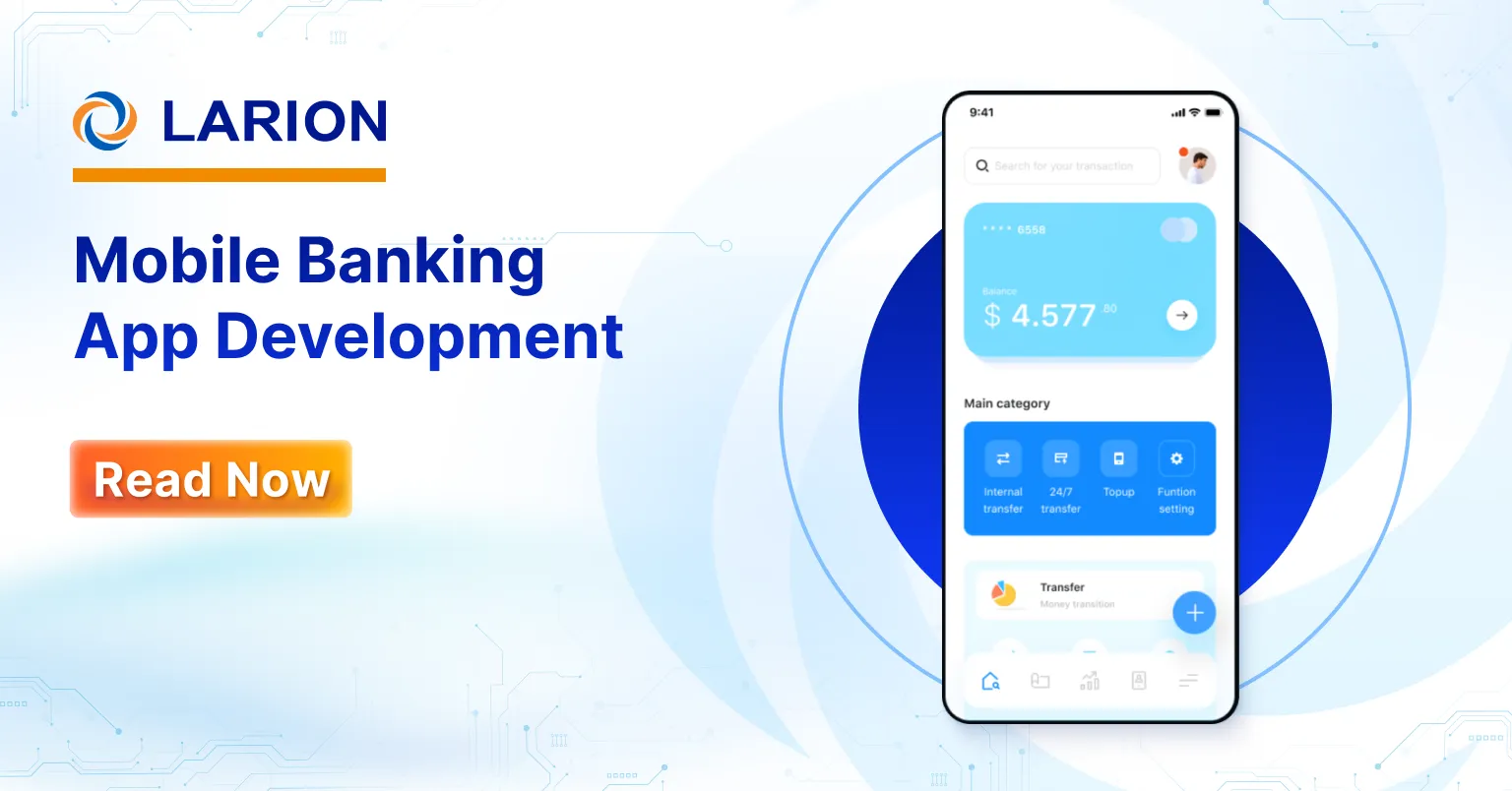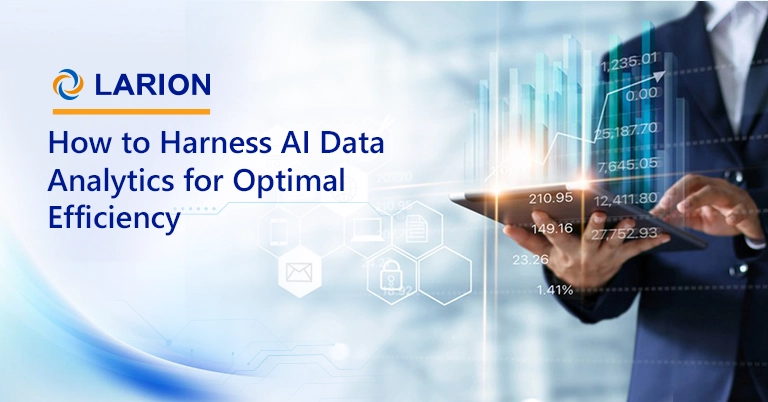
With data continuing to grow in volume and complexity, traditional methods for data analytics seem insufficient to uncover the full potential of available information. AI for data analytics has emerged as a powerful tool to enhance analytics by automating tasks, identifying hidden patterns, and formulating strategies. In fact, AI ranks second among the top technologies for companies investing in data and analytics, according to Gartner.
In this guide, we’ll explore various ways to apply AI for data analytics, including common techniques and use cases across industries such as healthcare, financial services, e-commerce, supply chain, marketing, sports, and more. Our experts will also discuss the challenges that lie ahead and what we can expect for the future of AI in this field. Let’s get started!
What is AI for Data Analytics and Why Does It Matter?
Simply put, AI for data analytics involves leveraging artificial intelligence to analyze vast datasets, streamline trend identification, and uncover insights, making it easier for data analysts to extract valuable information at scale
Here are some key benefits organizations can expect in Generative AI for data analytics:
- Enhanced speed: AI can process large and complex data volume much faster compared to humans, providing actionable insights and enabling more informed decisions
- Scalability: AI-powered systems can easily scale to handle large volumes of data, enabling businesses to grow their data analytics capabilities without significant manual effort.
- Data-driven decision making: Accurately identifies patterns in historical data, AI enables precise predictions for sales, customer behavior, and risk management.
- Improved efficiency: AI can automate repetitive tasks like data cleaning, preparation and reporting, reducing manual effort and increasing efficiency.
What are Common AI Techniques Used for Data Analytics?
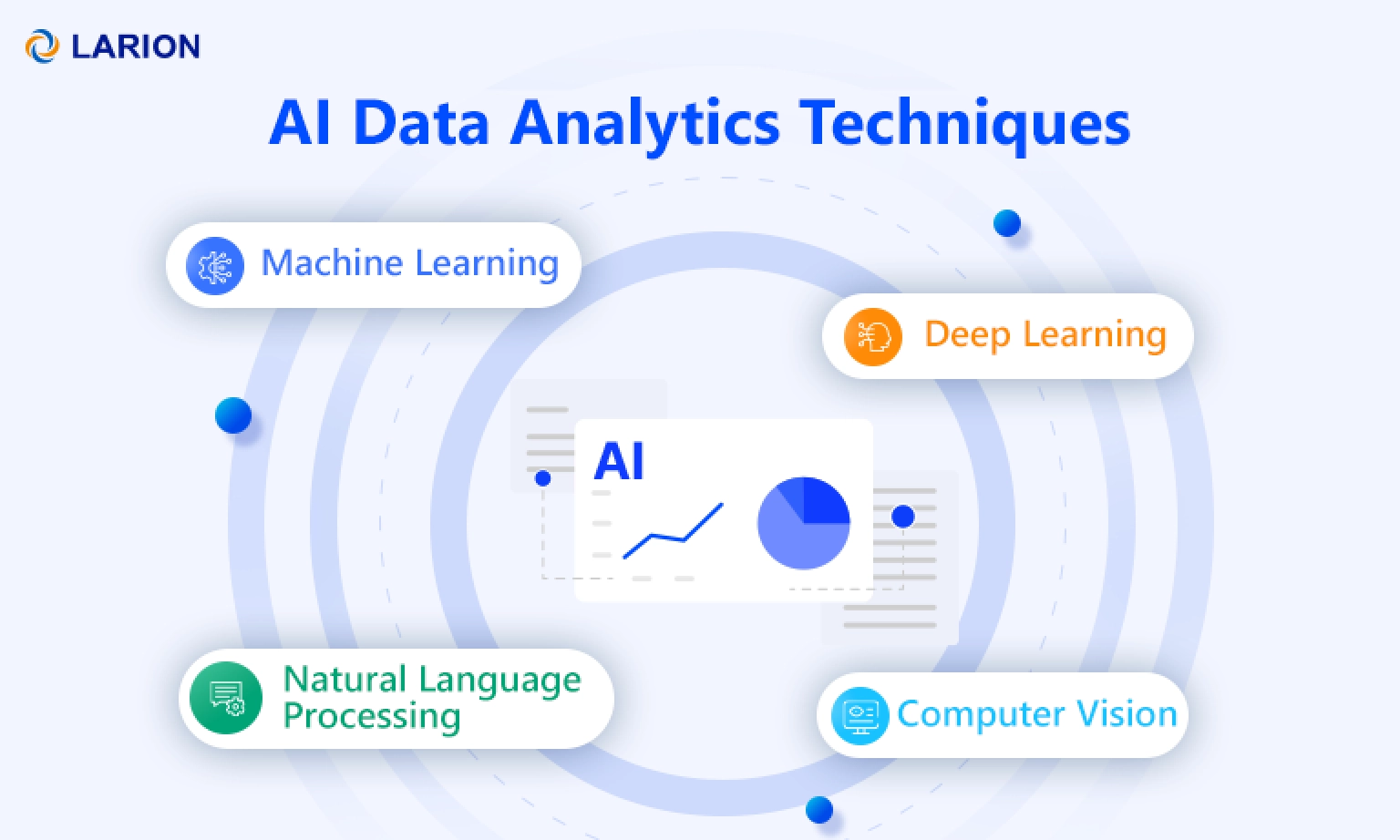
Depending on your specific use case, you can implement one or more of the following AI techniques
Machine Learning (ML)
Machine learning allows systems to learn from data and enhance their performance over time without explicit programming. Algorithms like linear regression, decision trees, random forests, and support vector machines are applied in data analytics to identify patterns, generate forecasts, and extract insights from large datasets.
Deep Learning
A subset of machine learning, deep learning utilizes artificial neural networks to model complex data patterns. In data analytics, deep learning algorithms are particularly effective for tasks such as speech recognition, image classification, and language processing, making them powerful tools for analyzing various data types.
Natural Language Processing (NLP)
NLP enables computers to comprehend, interpret, and generate human language. In data analytics, NLP techniques are used to analyze unstructured data such as text documents, social media posts, and customer reviews, helping businesses extract valuable insights from textual data sources.
Computer Vision
Computer vision focuses on how computers process and interpret visual data like images and videos. In data analytics, it helps analyze vast amounts of visual content, enabling tasks like motion tracking, facial recognition, and feature extraction from images.
6 Ways AI be used for data analytics
AI-driven analytics is created to simplify, automate and assist each phase of the data analysis journey
1. AI Synthetic Data Creation
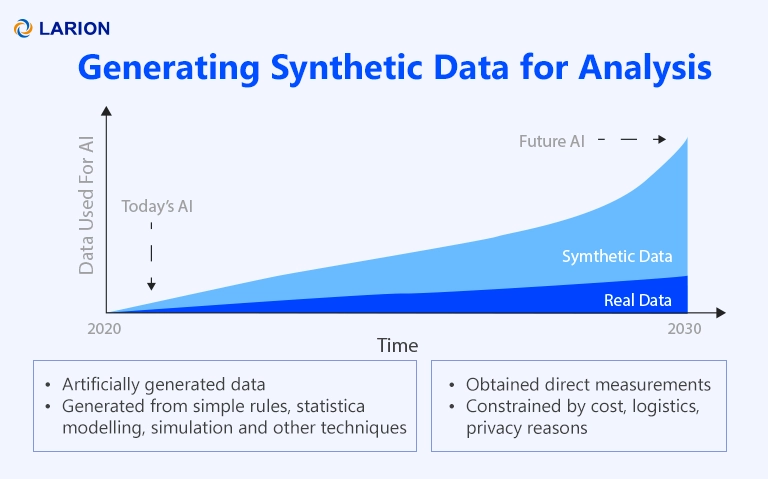
A significant application of AI for data analytics is the creation of synthetic data. According to a Gartner report, the majority of AI models are anticipated to rely on synthetic data by 2030.
Generating synthetic data provides a practical alternative to analyzing real-world data. This approach addresses privacy concerns, data scarcity, and regulatory restrictions by creating data that mimics the statistical properties and relationships of real datasets without containing any personal information.
As a result, synthetic data allows for the secure design and testing of algorithms, reducing the risk of data breaches while helping businesses comply with privacy regulations like the General Data Protection Regulation (GDPR)
Some popular AI-generated synthetic data platform are Mostly, Gretel, Synthea, Faker and Tonic
2. AI-enhanced Analytics Coding
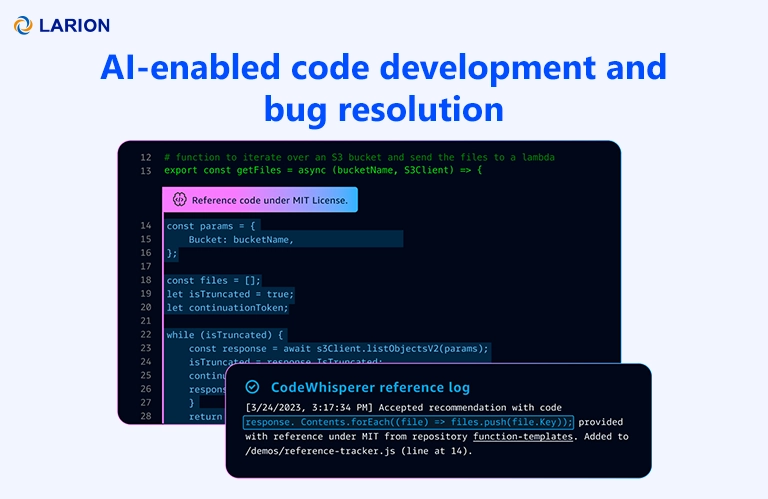
Several AI coding assistants, such as Jupyter AI, GitHub Copilot, and Tabnine, allow you to generate code blocks for analysis simply by providing a prompt. For example, within Python environments running the IPython kernel, you can use Jupyter AI to assist with coding.
If you’ve written more complex code and are struggling to explain it, you can ask AI to generate comments for you, streamlining the documentation process. Additionally, AI can offer code completions by finishing a function based on the context of your comments, helping you code faster.
These tools are also capable of debugging errors, significantly reducing the time spent searching for solutions.
3. AI Data Image Extraction
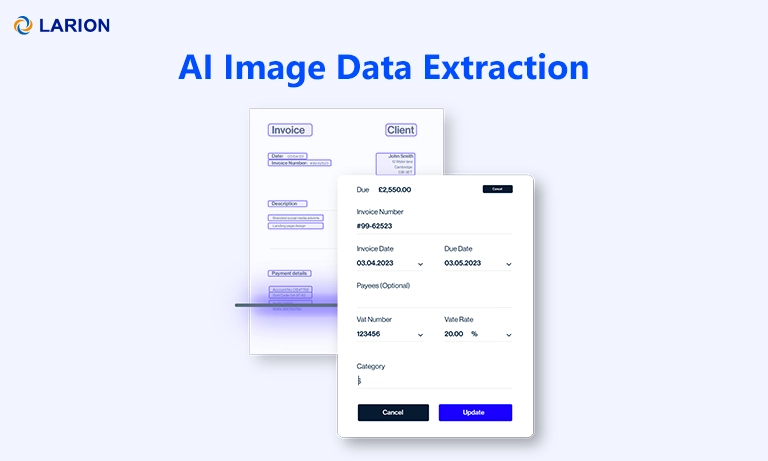
By automating the extraction of information from documents and images—such as contracts, invoices, and scanned images—AI data extraction tools significantly reduce the time and effort required for manual data entry.
Users simply define the required fields from the document, upload the files, and receive structured data within seconds. This streamlined workflow allows analysts to focus more on analyzing and interpreting data, rather than spending hours on repetitive entry tasks. Some of the top AI data extraction platforms include Amazon Textract, Extracta.ai, and Rossum.ai.
4. AI Data Cleaning
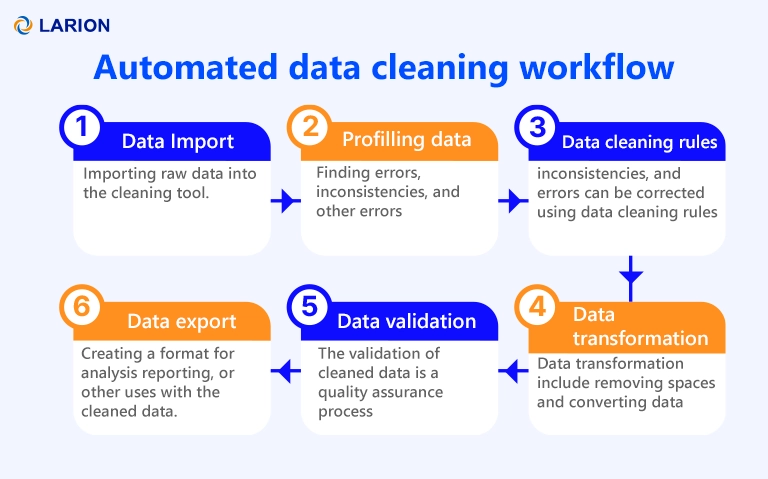
Another important way AI supports data analysts is through automated data cleaning. Ensuring data is error-free and ready for analysis is a critical but often time-consuming task. AI-driven data cleaning tools can streamline this process by identifying and resolving inconsistencies, eliminating duplicates, and filling in missing values.
For example, AI-powered data cleaning tools like OpenRefine, Trifacta, Zoho can automatically detect and correct formatting errors, like inconsistent date formats, or spot outliers that could distort analysis results. These tools can also suggest corrections or highlight areas needing manual review, increasing efficiency.
5. AI-powered Data Analytics & Interpretation
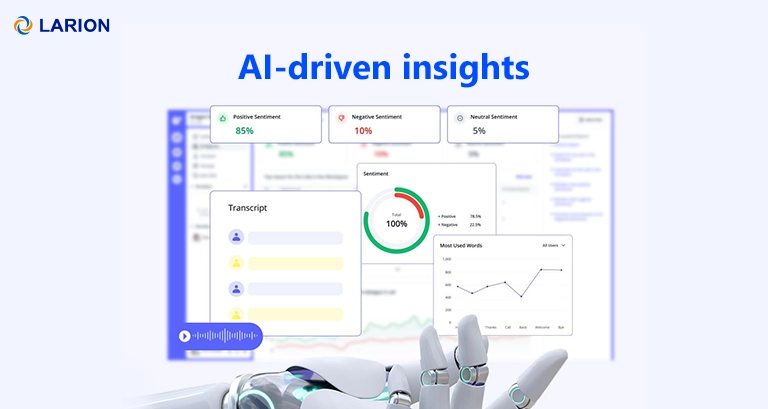
The surge of data volume and complexity necessitates advanced approaches to retrieve actionable insight. This is where AI plays into the play. The technology significantly improves data analytics by enabling real-time data processing, identifying complex patterns and relationships within large datasets for predictive analytics.
Businesses can then leverage it for data interpretation and understand why a specific data point on a chart behaves a certain way
For instance, you can insert prompts like:
“Why did sales decline in July?”
“What might be causing the spike in downloads?”
“Which quarter generated the highest revenue this year?”
The AI assistant will analyze your datasets to uncover trends and correlations that could help answer your queries. Beyond forecasting demand, AI models can also help identify new audiences based on current customer lifetime value or recommend personalized investment products.
6. AI Report Generator
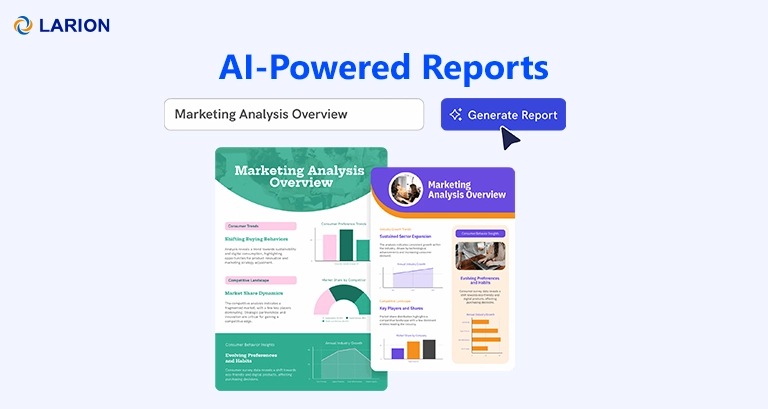
With AI-powered report generators, users can effortlessly consolidate data from various sources into intuitive dashboards and reports. The best thing is you don’t need prior experience in data visualization to generate the report. Simply select the data you wish to include, and the tool will automatically create user-friendly charts and graphs.
By recommending the most suitable chart types based on the data structure and desired insights, these AI report generators produce sophisticated visualizations that clarify complex datasets, making it easier for analysts to interpret and share findings with stakeholders.
Some AI report generators in the market include Piktochart, Venngage, and DataRobot.
AI-Powered Data Analytics Use Cases Across Industries
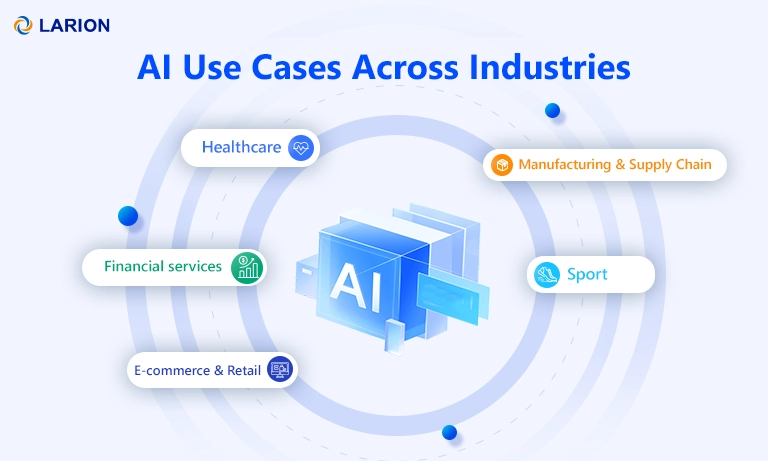
Besides the above-mentioned use cases, AI-driven analytics can also be applied in several industry-specific scenarios to drive operational efficiency. Here are a few sectors that have been actively investing in AI to transform data analytics processes:
AI analytics use cases in Healthcare
- Medical image analysis: Examines medical images such as MRIs and CT scans to detect anomalies that may signal the early stages of a disease
- Drug discovery: Analyze data on disease mechanisms, drug interactions, and patient characteristics to identify potential new drug candidates or repurpose existing medications.
AI analytics use cases in Financial Services
- Risk management: Investigates historical financial data, market trends, and customer behavior to assess risk levels, making it easier for financial institutions to mitigate potential financial losses.
- Fraud detection & prevention: Monitors transaction patterns in real-time to alert fraudulent activity and learns from past cases to enhance detection accuracy.
- Personalized experience: Offers customized financial advice and products by analyzing customer spending habits and behaviors
AI analytics use cases in E-commerce & Retail
- Recommendation engines: Analyzes user behavior, purchase history, and preferences to deliver personalized product recommendations, enhancing the user experience and boosting sales
- Demand forecasting: Evaluates market trends, weather patterns, and historical sales data to forecast demand more accurately, allowing businesses to optimize inventory and reduce wastage
- Pricing optimization: Adjusts pricing dynamically based on market conditions, competitor prices, and consumer demand, ensuring competitive yet profitable pricing strategies.
AI analytics use cases in Manufacturing & Supply Chain
- Predictive maintenance: Monitors machinery and production lines in real time, predicting when equipment will fail or need repairs, reducing downtime and maintenance costs.
- Supply chain optimization: Analyzes data from suppliers, production, demand and distribution networks to optimize route optimization and inventory management
- Production efficiency: Assesses production data to identify bottlenecks, optimize workflows, and improve overall manufacturing efficiency.
AI analytics use cases in Sports
- Predictive analysis: Predicts player fatigue, injury risk, and future performance by integrating multiple physiological and performance metrics via wearable devices for optimized training and recovery plans
- Game strategy & coaching: Studies game footage to find open spaces, positioning patterns, player tendencies, etc. to help coaches develop effective tactics
Challenges of Applying AI for Data Analytics
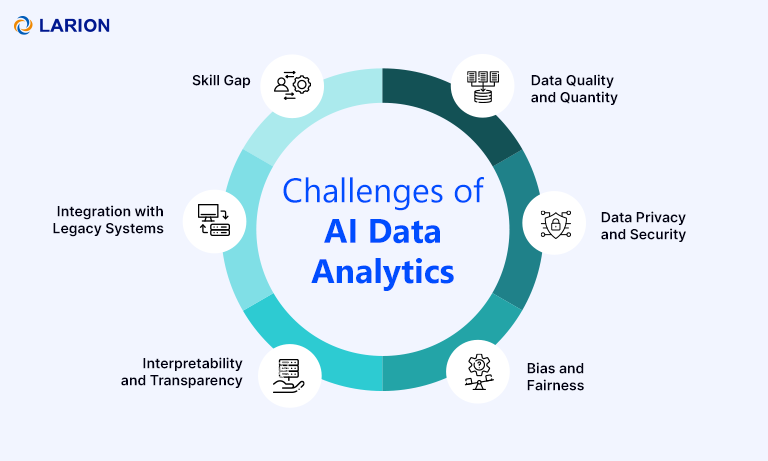
Despite its immense potential, AI for data analytics faces face a number of challenges that must be carefully navigated
Data quality & quantity
AI models thrive on large volumes of high-quality data to produce accurate and meaningful insights. However, many organizations struggle with poor data quality due to issues such as incomplete, inconsistent, or unstructured data. Without robust data cleaning, integration, and standardization processes in place, AI-driven analytics may generate misleading results, ultimately reducing their effectiveness.
Data privacy & security
As AI usage in data analytics grows, concerns over data privacy and security have escalated. Compliance with regulations like GDPR and CCPA adds complexity to AI deployments. To address this, organizations must implement strong data governance, anonymization, and security measures to protect data and comply with evolving security regulations
Bias & fairness
AI systems are only as good as the data they are trained on. If the data used to develop AI models is biased, these biases can be reflected and even amplified in the AI’s outputs, leading to discriminatory or unfair outcomes.
Interpretability & transparency
AI models, particularly complex ones like deep learning and neural networks, often function as “black boxes,” where their decision-making processes are opaque, making it difficult for stakeholders to understand how AI arrived at a specific conclusion or recommendation. Developing explainable AI (XAI) frameworks that provide insights into the reasoning behind AI models’ outputs without sacrificing performance is a major area of research but remains a challenging endeavor
Integration with legacy systems
Many organizations operate with legacy systems that were not designed to support the advanced computational requirements of AI technologies. Integrating AI-driven analytics into these outdated systems often requires substantial investment in infrastructure upgrades, re-engineering of workflows, and complex data migrations.
Skill gap
While the demand for AI and data analytics expertise continues to surge, there is a global shortage of qualified professionals with the necessary skills to develop, implement, and manage AI-driven solutions. Companies often struggle to recruit and retain individuals with specialized knowledge in areas like machine learning, data science, and AI engineering
What Lies Ahead for AI for Data Analytics?
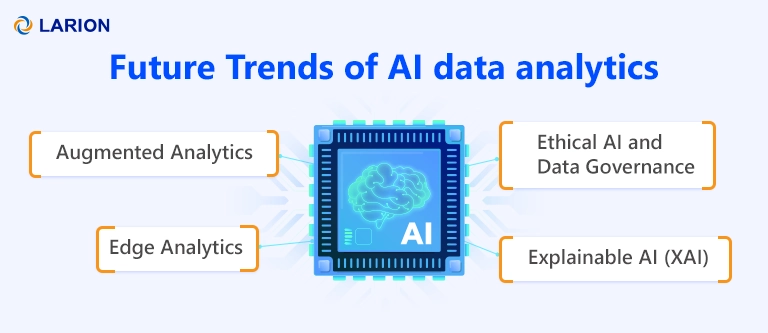
As AI investments grow—with an expected $200 billion in global spending on researching and implementing this technology—the future trends of AI in the data analytics sector are anticipated to expand significantly. Here’s what to expect moving forward
Improved predictive analytics
As AI technology advances, algorithms will become increasingly sophisticated, making real-time data analysis more prevalent and enhancing predictive analytics capabilities. This evolution will enable businesses to forecast trends and outcomes with greater accuracy, ultimately allowing for more effective resource allocation and planning
Edge analytics
As IoT devices proliferate, AI-powered data analytics will increasingly move to the edge, processing data locally on devices rather than in centralized data centers. This will enable real-time insights with lower latency, particularly valuable for industries like healthcare, manufacturing, and autonomous vehicles
Ethical AI & data governance
As AI-driven analytics becomes more widespread, there will be a stronger emphasis on ensuring ethical AI use, data privacy, and compliance with regulatory frameworks like GDPR and CCPA. Robust data governance strategies will be a critical aspect of AI adoption
Explainable AI (XAI)
With AI systems becoming more complex, understanding how they arrive at their decisions becomes increasingly important. Explainable AI aims to make AI models more transparent and interpretable, enhancing trust and accountability
Can AI Take Over Data Analyst Jobs?
While AI for data analytics is witnessing rapid advancement and gradually assisting with multiple tasks in the field, it’s unlikely to completely replace human analysts.
Here’s why:
- Human judgment: While AI can process vast amounts of data and identify patterns, human analysts are still essential for interpreting nuances and subtleties that machines might miss, especially in complex scenarios that involve cultural, social, or emotional factors.
- Ethical considerations: As previously mentioned, AI algorithms can be biased based on the model it trained on, and human oversight is crucial to ensure ethical and fair data analysis
- Inadequate data: When there wasn’t enough historical data or the market was particularly unpredictable, it necessitates an experience human analysts with extensive domain expertise and experience to make decisions
Instead of replacing data analysts, AI is likely to augment their capabilities by automating repetitive tasks that take up a significant amount of their time. The ideal scenario is a collaboration between AI and human analysts, where each complements the other’s strengths.
Make Faster and Better Decisions with AI-powered Data Analytics
Leveraging machine learning (ML), deep learning, natural language processing (NLP), and computer vision, AI for data analytics is revolutionizing the field by generating synthetic data, creating code, extracting image data, performing predictive analytics, and producing reports. These capabilities enhance speed, scalability, decision-making, and efficiency across industries such as healthcare, finance, retail, sports, marketing, and manufacturing.
However, challenges like data quality, privacy, bias, transparency, integration, and skill gaps remain. Fortunately, advancements in augmented AI, edge computing, explainable AI, and data governance are expected to address these issues in the near future.
Have you considered integrating AI-powered data analytics in your processes? If so, what’s holding you back from implementation? With over 20 years of experience in the field, our data experts are equipped to help you evaluate your current processes and effectively leverage AI for deeper insights. Companies across industries are progressively adopting this transformative technology—don’t be the one left behind!




